Influence of Process Parameters and Reducing Agent on the Size of MoS2 Nanoparticles Obtained in Impinging Jet Reactor
Abstract
:1. Introduction
2. Materials and Methods
2.1. Numerical Methodology
2.2. Effect of Substrate Concentration
2.3. Effect of Substrate Flow Velocity
2.4. Effect of Process Temperature
2.5. Effect of Reducing Agent
2.6. Purification
2.7. Physicochemical Characterization
3. Results and Discussion
3.1. Numerical Simulations
3.2. Effect of Process Conditions on Particle Size Distribution
3.3. Effect of Reducing Agent on Particle Size Distribution after Each Stage of Preparation
3.4. Material Characterization
4. Conclusions
Author Contributions
Funding
Institutional Review Board Statement
Informed Consent Statement
Data Availability Statement
Conflicts of Interest
References
- Pi, L.; Li, L.; Liu, K.; Zhang, Q.; Li, H.; Zhai, T. Recent Progress on 2D Noble-Transition-Metal Dichalcogenides. Adv. Funct. Mater. 2019, 29, 1904932. [Google Scholar] [CrossRef]
- Fu, Q.; Han, J.; Wang, X.; Xu, P.; Yao, T.; Zhong, J.; Zhong, W.; Liu, S.; Gao, T.; Zhang, Z.; et al. 2D Transition Metal Dichalcogenides: Design, Modulation, and Challenges in Electrocatalysis. Adv. Mater. 2021, 33, e1907818. [Google Scholar] [CrossRef] [PubMed]
- Cordeiro, N.J.A.; Gaspar, C.; De Oliveira, M.J.; Nunes, D.; Barquinha, P.; Pereira, L.; Fortunato, E.; Martins, R.; Laureto, E.; Lourenço, S.A. Fast and Low-Cost Synthesis of MoS2 Nanostructures on Paper Substrates for Near-Infrared Photodetectors. Appl. Sci. 2021, 11, 1234. [Google Scholar] [CrossRef]
- Bojarska, Z.; Kopytowski, J.; Mazurkiewicz-Pawlicka, M.; Bazarnik, P.; Gierlotka, S.; Rożeń, A.; Makowski, L. Molybdenum disulfide-based hybrid materials as new types of oil additives with enhanced tribological and rheological properties. Tribol. Int. 2021, 160, 106999. [Google Scholar] [CrossRef]
- Serles, P.; Gaber, K.; Pajovic, S.; Colas, G.; Filleter, T. High Temperature Microtribological Studies of MoS2 Lubrication for Low Earth Orbit. Lubricants 2020, 8, 49. [Google Scholar] [CrossRef]
- Vazirisereshk, M.R.; Martini, A.; Strubbe, D.A.; Baykara, M.Z. Solid Lubrication with MoS2: A Review. Lubricants 2019, 7, 57. [Google Scholar] [CrossRef] [Green Version]
- Lu, G.; Shuai, C.; Liu, Y.; Yang, X. Synergistic effect of single-wall carbon nanotubes and MoS2 on tribological performance of polyether MDI polyurethane elastomer. J. Mech. Sci. Technol. 2022, 36, 179–185. [Google Scholar] [CrossRef]
- Makowski, L.; Bojarska, Z.; Rożeń, A. Rheological Properties of Engine Oil with Nano-Additives Based on MoS2 Materials. Nanomaterials 2022, 12, 581. [Google Scholar] [CrossRef]
- Yan, Y.; Jiang, C.; Huo, Y.; Li, C. Preparation and Tribological Behaviors of Lubrication-Enhanced PEEK Composites. Appl. Sci. 2020, 10, 7536. [Google Scholar] [CrossRef]
- Uzoma, P.; Hu, H.; Khadem, M.; Penkov, O. Tribology of 2D Nanomaterials: A Review. Coatings 2020, 10, 897. [Google Scholar] [CrossRef]
- Bojarska, Z.; Mazurkiewicz-Pawlicka, M.; Gierlotka, S.; Makowski, L. Production and Properties of Molybdenum Disulfide/Graphene Oxide Hybrid Nanostructures for Catalytic Applications. Nanomaterials 2020, 10, 1865. [Google Scholar] [CrossRef] [PubMed]
- Meng, C.; Chen, X.; Gao, Y.; Zhao, Q.; Kong, D.; Lin, M.; Chen, X.; Li, Y.; Zhou, Y. Recent Modification Strategies of MoS2 for Enhanced Electrocatalytic Hydrogen Evolution. Molecules 2020, 25, 1136. [Google Scholar] [CrossRef] [PubMed] [Green Version]
- Ding, Q.; Song, B.; Xu, P.; Jin, S. Efficient Electrocatalytic and Photoelectrochemical Hydrogen Generation Using MoS2 and Related Compounds. Chem 2016, 1, 699–726. [Google Scholar] [CrossRef] [Green Version]
- Yang, L.; Liu, P.; Li, J.; Xiang, B. Two-Dimensional Material Molybdenum Disulfides as Electrocatalysts for Hydrogen Evolution. Catalysts 2017, 7, 285. [Google Scholar] [CrossRef] [Green Version]
- Ghanashyam, G.; Jeong, H.K. Size Effects of MoS2 on Hydrogen and Oxygen Evolution Reaction. J. Electrochem. Sci. Technol. 2022, 13, 120–127. [Google Scholar] [CrossRef]
- Tang, Q.; Jiang, D.-E. Mechanism of Hydrogen Evolution Reaction on 1T-MoS2 from First Principles. ACS Catal. 2016, 6, 4953–4961. [Google Scholar] [CrossRef]
- Vedhanarayanan, B.; Shi, J.; Lin, J.-Y.; Yun, S.; Lin, T.-W. Enhanced activity and stability of MoS2 through enriching 1T-phase by covalent functionalization for energy conversion applications. Chem. Eng. J. 2021, 403, 126318. [Google Scholar] [CrossRef]
- Wu, L.; Longo, A.; Dzade, N.Y.; Sharma, A.; Hendrix, M.M.R.M.; Bol, A.A.; de Leeuw, N.H.; Hensen, E.J.M.; Hofmann, J.P. The Origin of High Activity of Amorphous MoS2 in the Hydrogen Evolution Reaction. ChemSusChem 2019, 12, 4383–4389. [Google Scholar] [CrossRef] [PubMed] [Green Version]
- Xu, X.; Liu, L. MoS2 with Controlled Thickness for Electrocatalytic Hydrogen Evolution. Nanoscale Res. Lett. 2021, 16, 137. [Google Scholar] [CrossRef] [PubMed]
- Zhang, X.; Zhang, Y.; Yu, B.-B.; Yin, X.-L.; Jiang, W.-J.; Jiang, Y.; Hu, J.-S.; Wan, L.-J. Physical vapor deposition of amorphous MoS2 nanosheet arrays on carbon cloth for highly reproducible large-area electrocatalysts for the hydrogen evolution reaction. J. Mater. Chem. A 2015, 3, 19277–19281. [Google Scholar] [CrossRef]
- Liu, H.F.; Wong, S.L.; Chi, D.Z. CVD Growth of MoS2-based Two-dimensional Materials. Chem. Vap. Depos. 2015, 21, 241–259. [Google Scholar] [CrossRef]
- Li, W.-J.; Shi, E.-W.; Ko, J.-M.; Chen, Z.-Z.; Ogino, H.; Fukuda, T. Hydrothermal synthesis of MoS2 nanowires. J. Cryst. Growth 2003, 250, 418–422. [Google Scholar] [CrossRef]
- Feng, X.; Tang, Q.; Zhou, J.; Fang, J.; Ding, P.; Sun, L.; Shi, L. Novel mixed-solvothermal synthesis of MoS2 nanosheets with controllable morphologies. Cryst. Res. Technol. 2013, 48, 363–368. [Google Scholar] [CrossRef]
- Reshmi, S.; Akshaya, M.V.; Satpati, B.; Roy, A.; Basu, P.K.; Bhattacharjee, K. Tailored MoS2 nanorods: A simple microwave assisted synthesis. Mater. Res. Express 2017, 4, 115012. [Google Scholar] [CrossRef]
- Wojtalik, M.; Bojarska, Z.; Makowski, Ł. Experimental studies on the chemical wet synthesis for obtaining high-quality MoS2 nanoparticles using impinging jet reactor. J. Solid State Chem. 2020, 285, 121254. [Google Scholar] [CrossRef]
- Bojarska, Z.; Mazurkiewicz-Pawlicka, M.; Mierzwa, B.; Płociński, T.; Makowski, L. Effect of the carbon support on MoS2 hybrid nanostructures prepared by an impinging jet reactor for hydrogen evolution reaction catalysis. J. Environ. Chem. Eng. 2022, 10, 108038. [Google Scholar] [CrossRef]
- Green, D.W.; Perry, R.H. (Eds.) Perry’s Chemical Engineer’s Handbook, 8th ed.; McGraw-Hill: New York, NY, USA, 2008. [Google Scholar]
- Wojtalik, M.; Orciuch, W.; Makowski, L. Nucleation and growth kinetics of MoS2 nanoparticles obtained by chemical wet synthesis in a jet reactor. Chem. Eng. Sci. 2020, 225, 115814. [Google Scholar] [CrossRef]
- Wojtalik, M.; Wojtas, K.; Gołębiowska, W.; Jarząbek, M.; Orciuch, W.; Makowski, L. Molybdenum Disulphide Precipitation in Jet Reactors: Introduction of Kinetics Model for Computational Fluid Dynamics Calculations. Molecules 2022, 27, 3943. [Google Scholar] [CrossRef]
- Wojtas, K.; Orciuch, W.; Makowski, L. Comparison of Large Eddy Simulations and κ-ε Modelling of Fluid Velocity and Tracer Concentration in Impinging Jet Mixers. Chem. Process Eng. 2015, 36, 251–262. [Google Scholar] [CrossRef]
- Wojtas, K.; Orciuch, W.; Makowski, L. Large Eddy Simulations of Reactive Mixing in Jet Reactors of Varied Geometry and Size. Processes 2020, 8, 1101. [Google Scholar] [CrossRef]
- Wojtas, K.; Makowski, L.; Orciuch, W. Barium sulfate precipitation in jet reactors: Large eddy simulations, kinetics study and design considerations. Chem. Eng. Res. Des. 2020, 158, 64–76. [Google Scholar] [CrossRef]
- Gołasa, K.; Grzeszczyk, M.; Bożek, R.; Leszczyński, P.; Wysmołek, A.; Potemski, M.; Babiński, A. Resonant Raman scattering in MoS 2—From bulk to monolayer. Solid State Commun. 2014, 197, 53–56. [Google Scholar] [CrossRef]
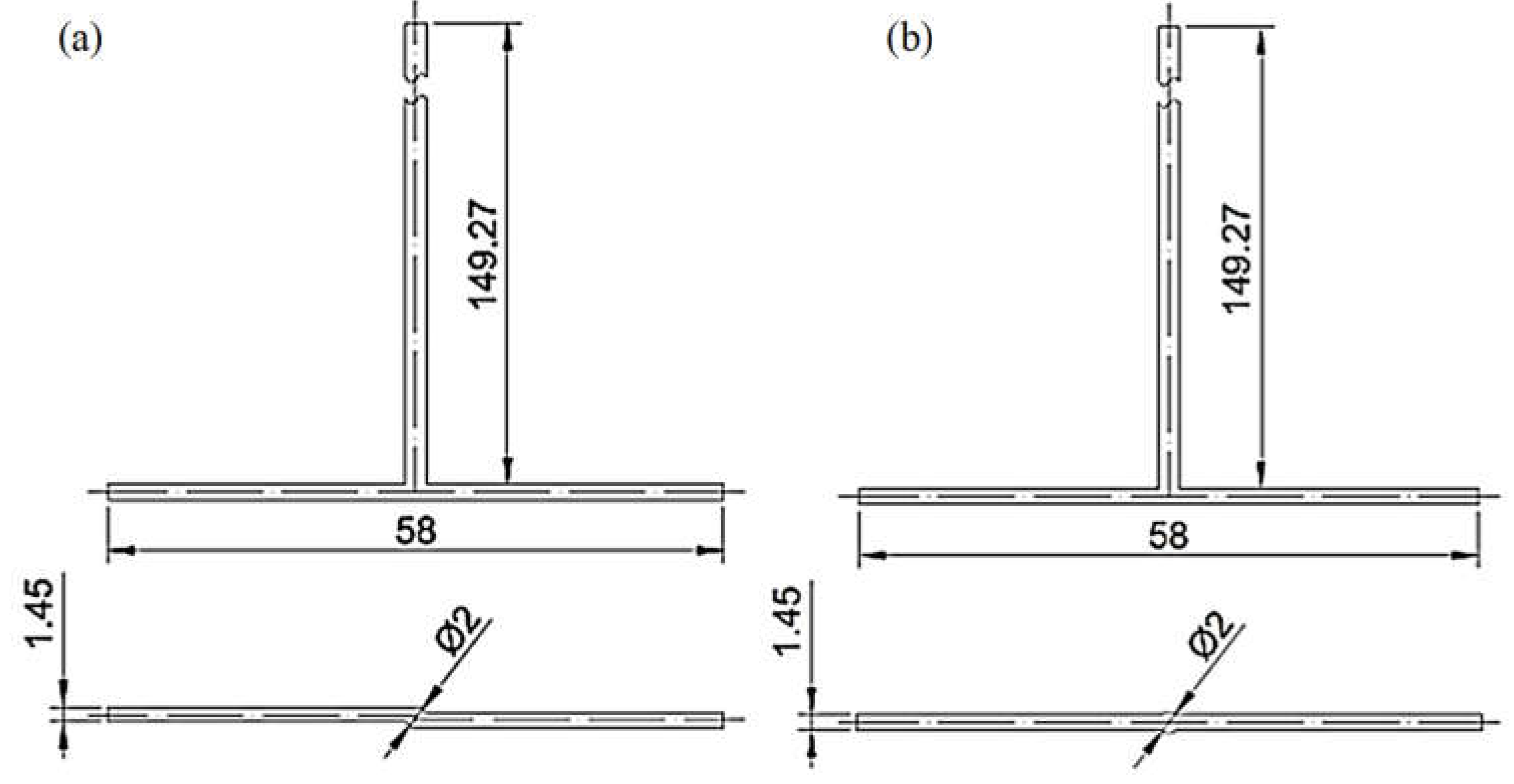
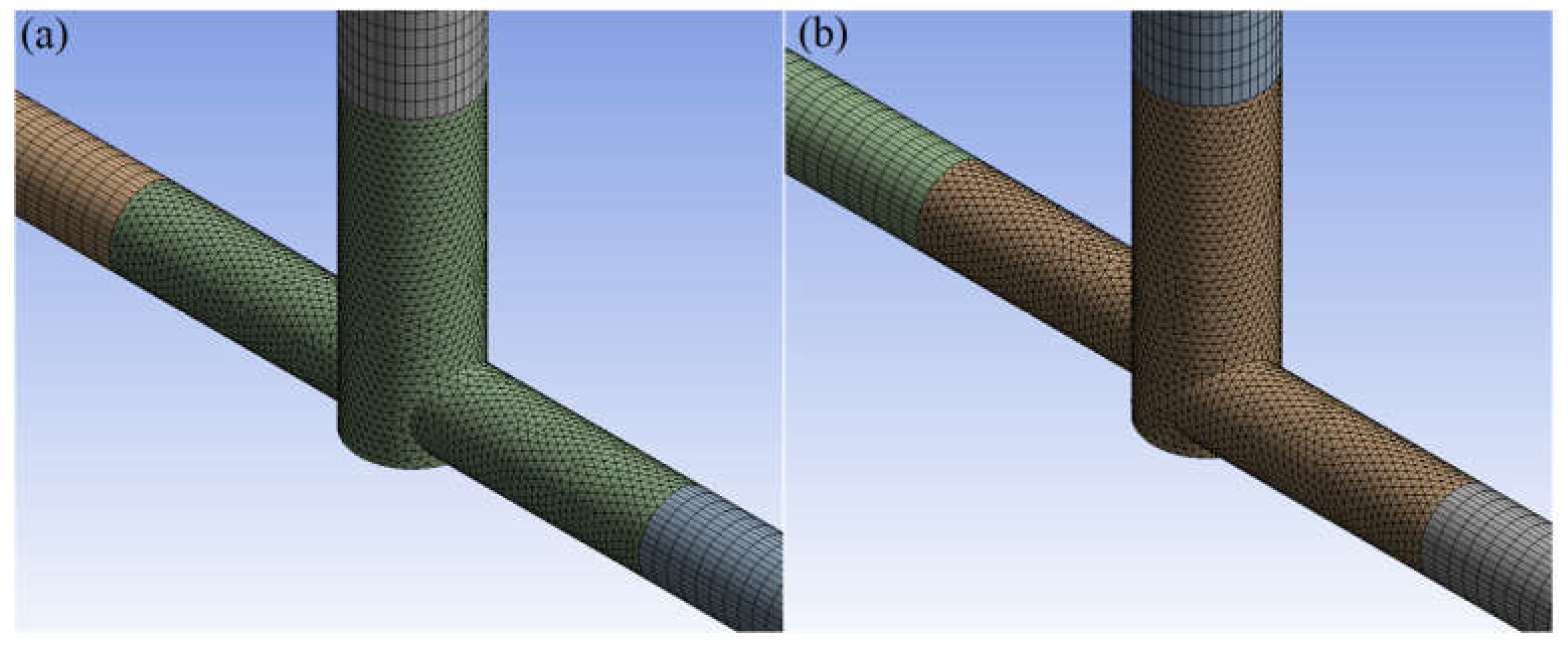

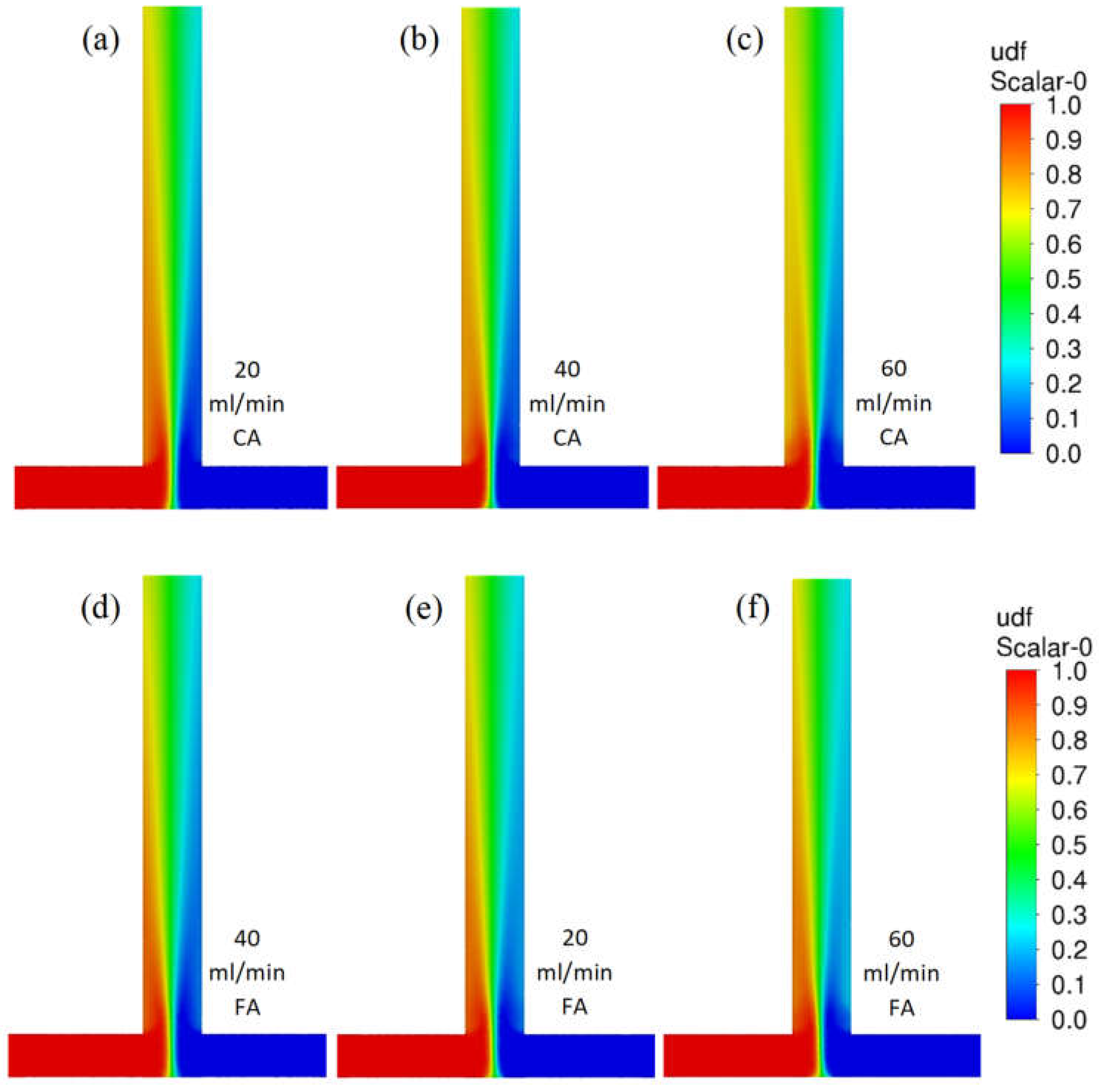
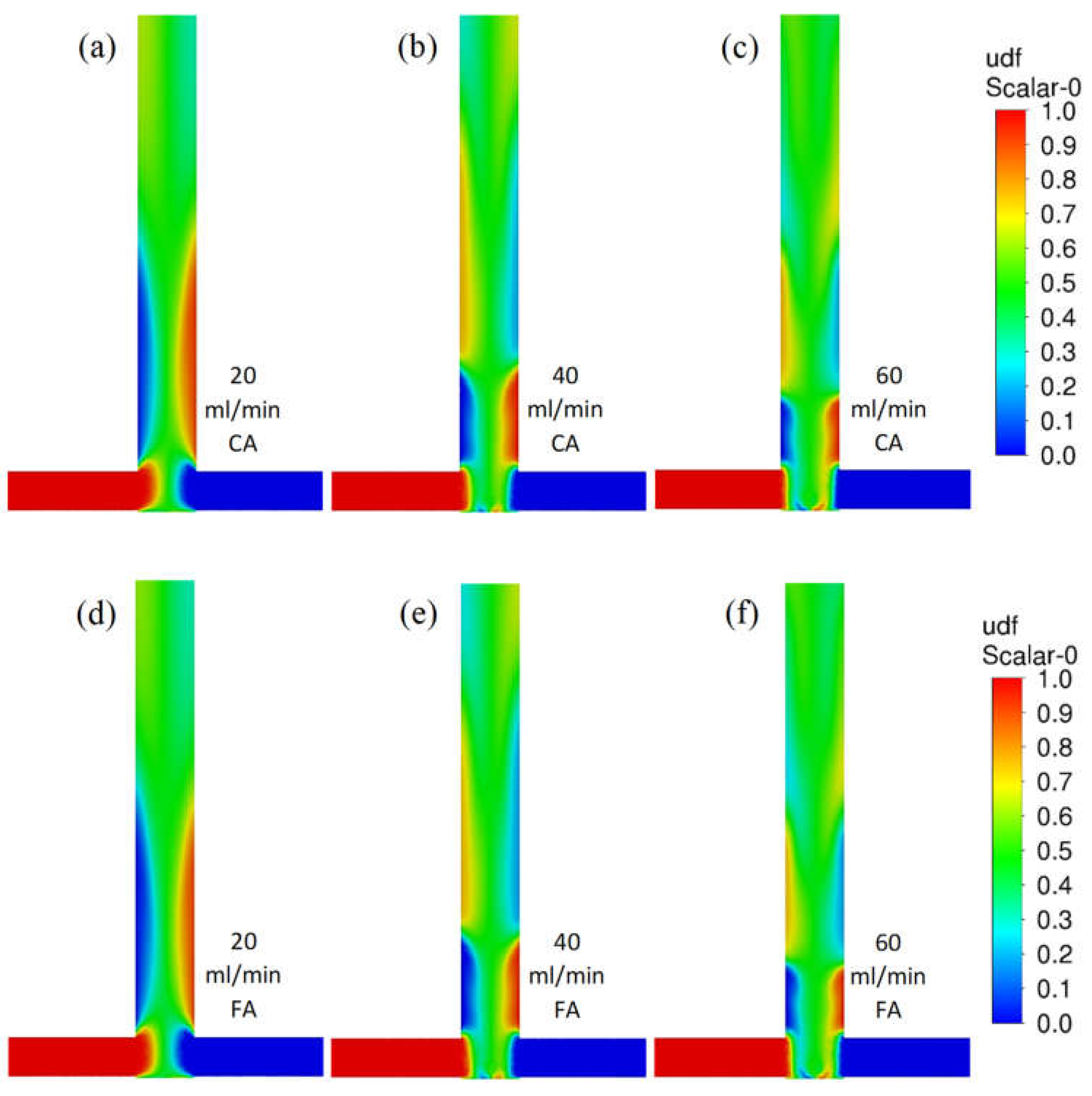


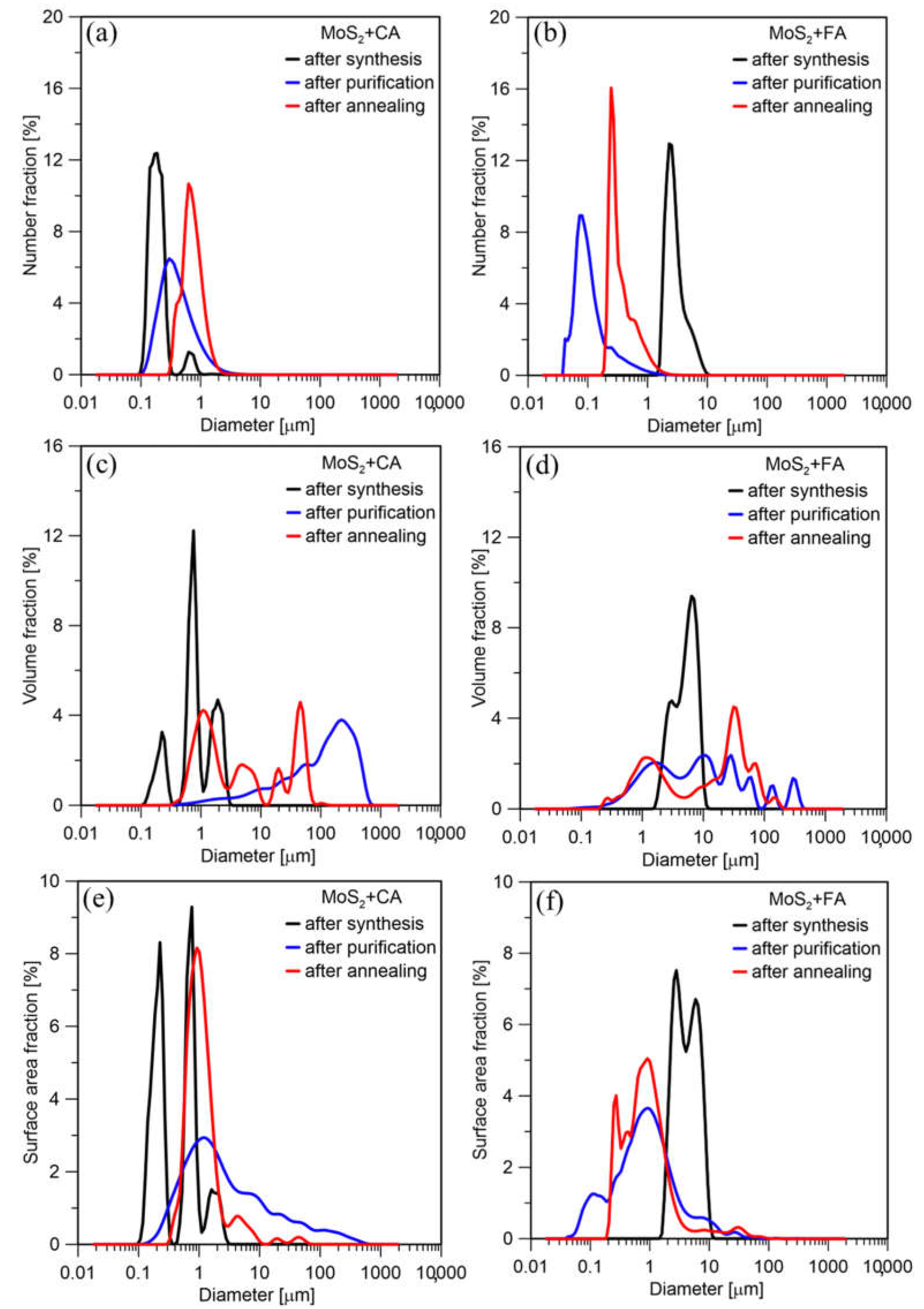

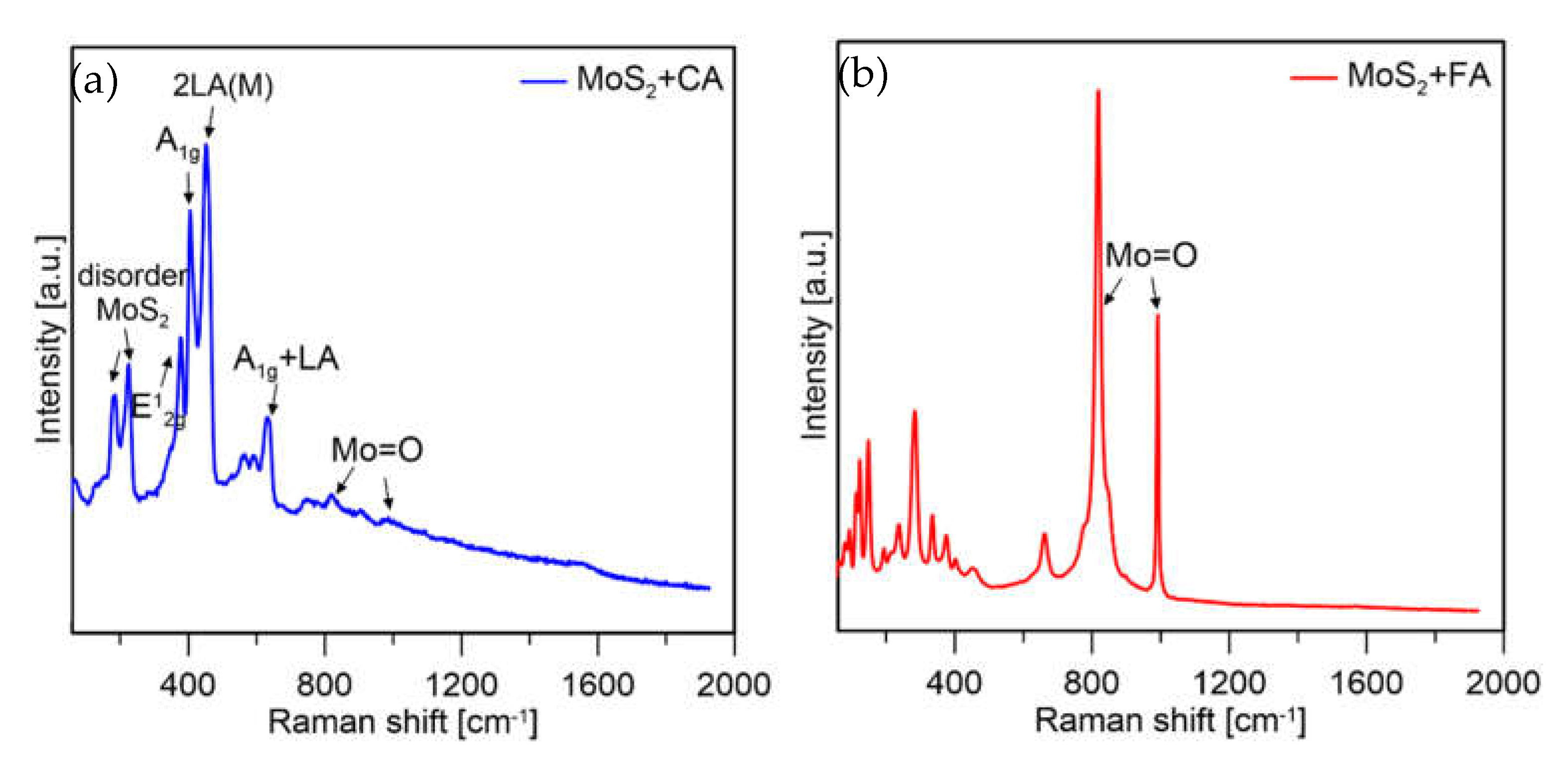
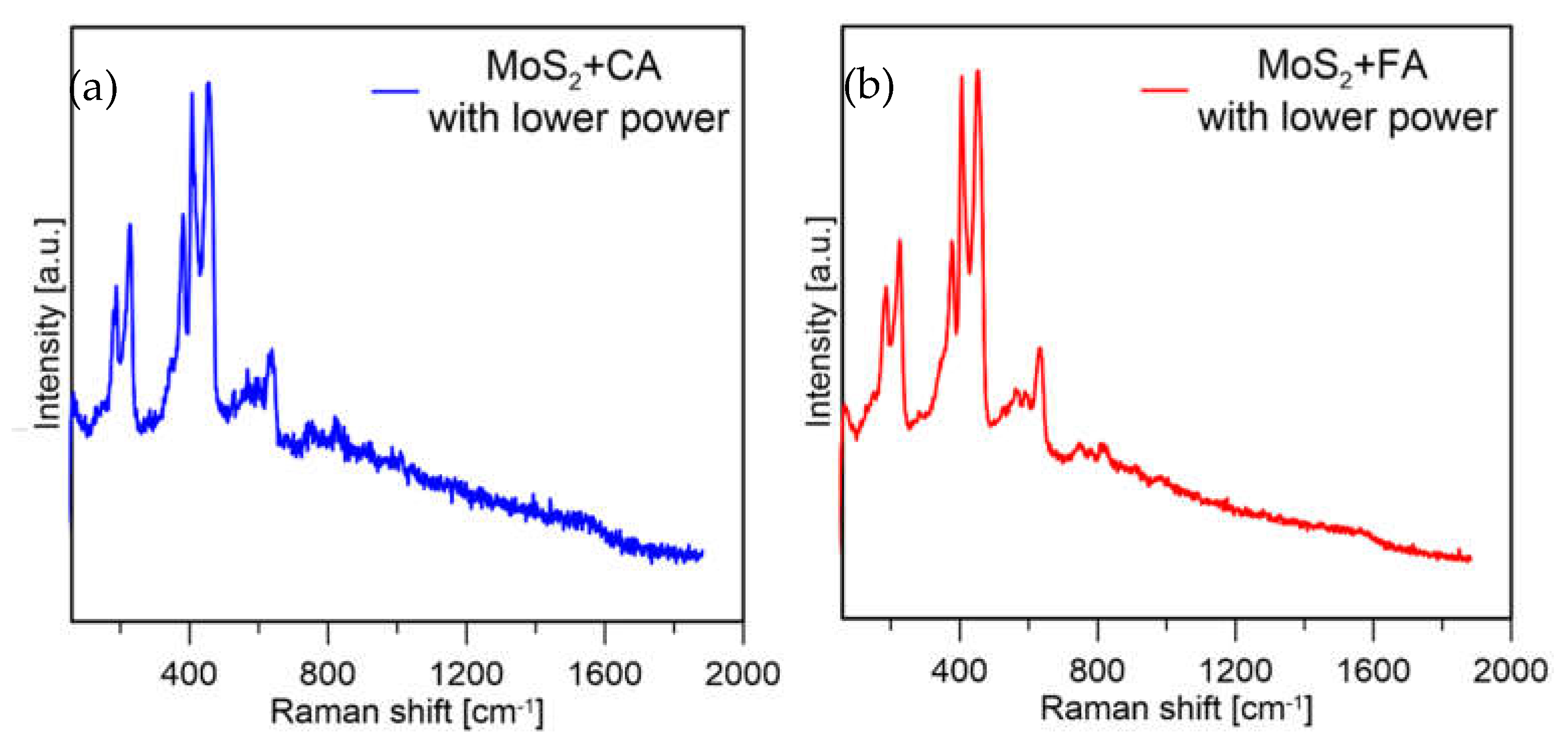
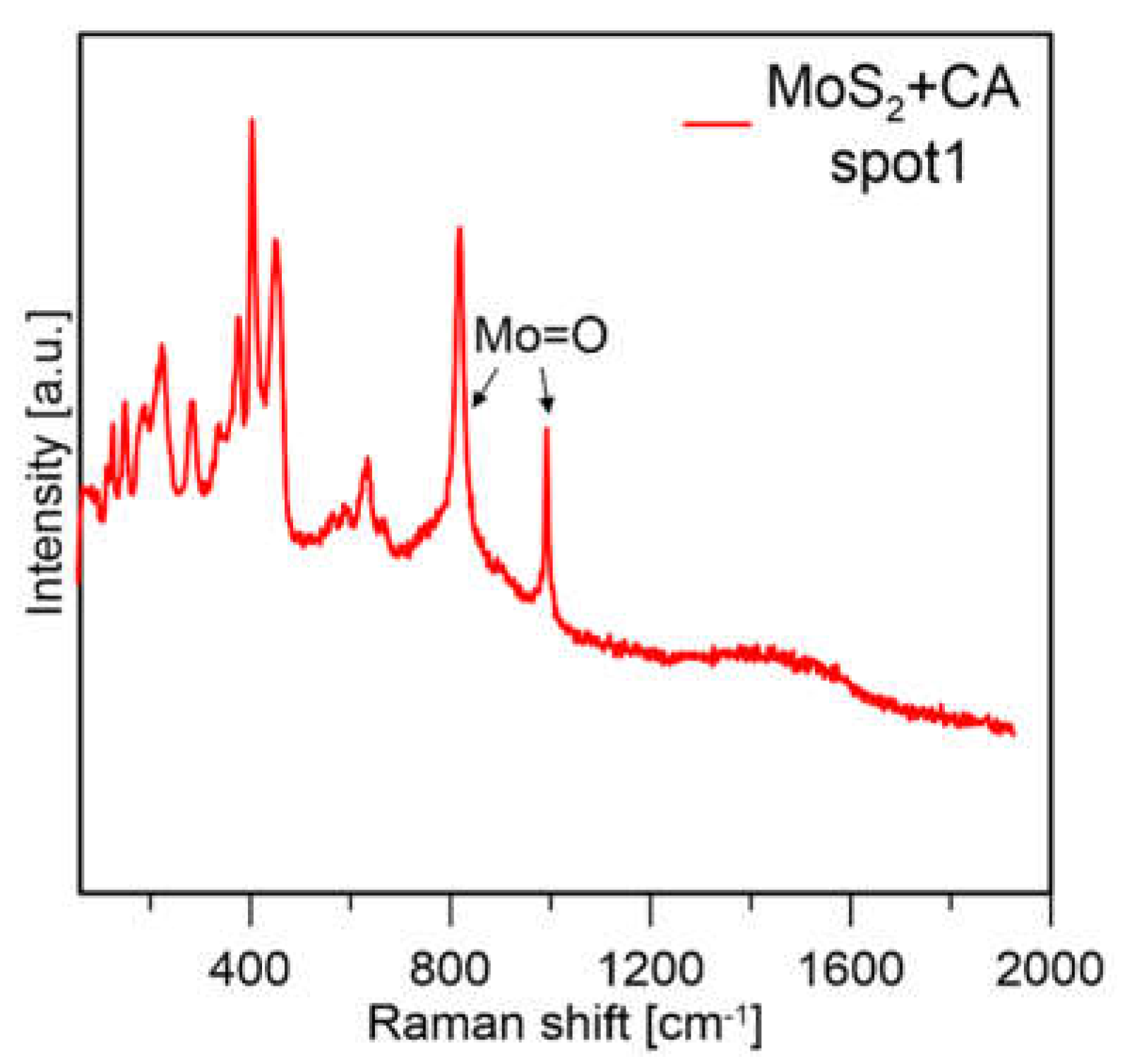
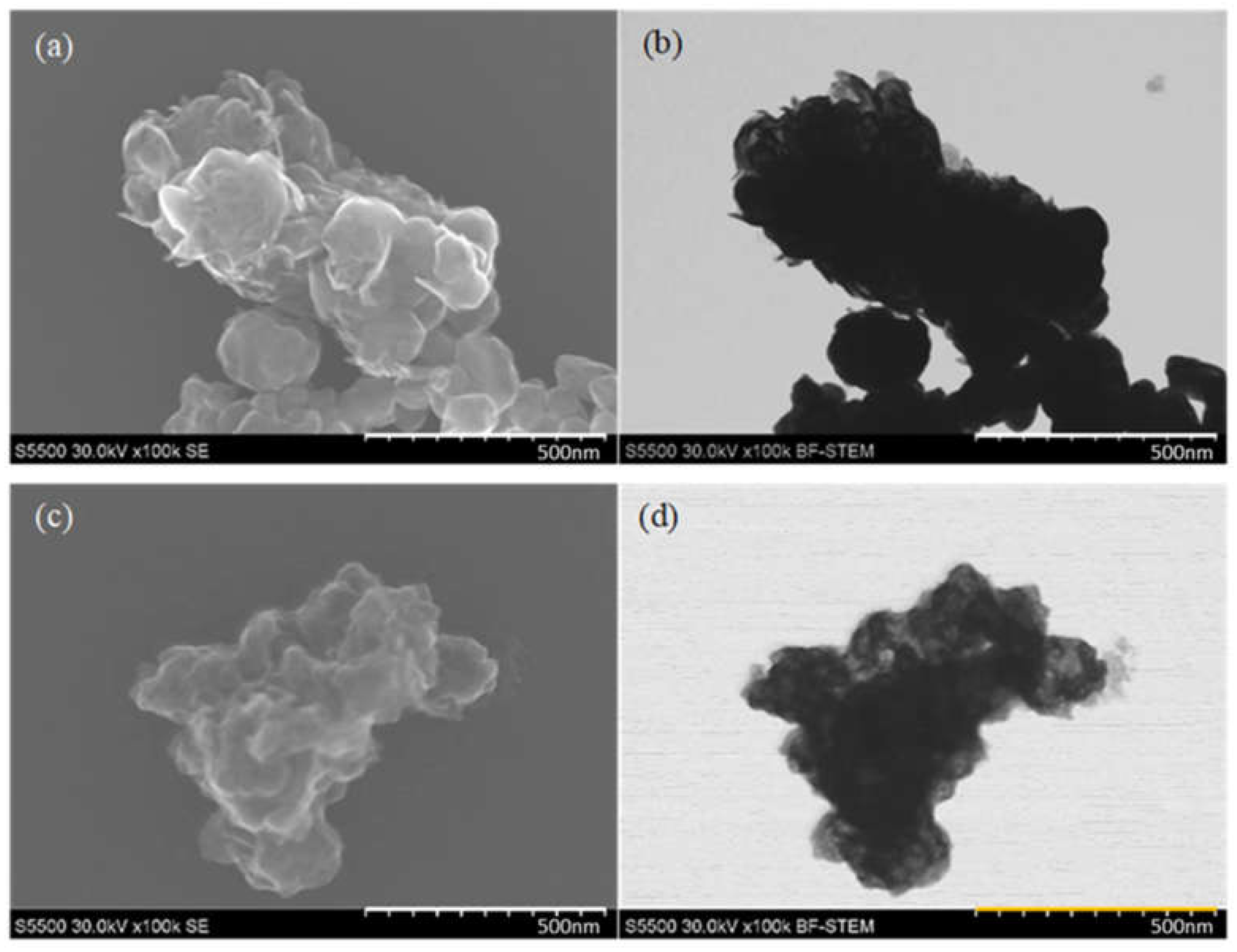
| Solution | Density [kg/m3] | Dynamic Viscosity [Pa∙s] |
|---|---|---|
| CA | 1028.63 | 1.216 × 10−3 |
| FA | 1072.17 | 1.194 × 10−3 |
| AS (same as water) | 998.20 | 1.003 × 10−3 |
| Reactor Type | Flow Velocity [mL/min] | Volume of Mixing Zones with the Highest Intensity * [m3] | Maximum Intensity of Turbulence [%] |
|---|---|---|---|
| T | 20 | 1.49 × 10−9 | 13 |
| 40 | 1.78 × 10−9 | 24 | |
| 60 | 1.80 × 10−9 | 34 | |
| S | 20 | 1.89 × 10−9 | 13 |
| 40 | 3.40 × 10−9 | 24 | |
| 60 | 4.10 × 10−9 | 35 |
| Mean Sizes | |||
|---|---|---|---|
| CMo [mol/m3] | L10 [µm] | L32 [µm] | L43 [µm] |
| 0.2 | 0.196 ± 0.015 | 0.521 ± 0.174 | 0.927 ± 0.358 |
| 0.3 | 0.211 ± 0.023 | 0.913 ± 0.198 | 1.431 ± 0.131 |
| 0.4 | 0.183 ± 0.002 | 0.979 ± 0.326 | 1.246 ± 0.058 |
| 0.5 | 0.187± 0.008 | 0.885 ± 0.300 | 1.827 ± 0.295 |
| 0.8 | 1.466 ± 0.135 | 10.977 ± 1.445 | 37.674 ± 4.996 |
| Mean Sizes | |||
|---|---|---|---|
| Q [mL/min] | L10 [µm] | L32 [µm] | L43 [µm] |
| 10 | 0.254 ± 0.030 | 0.645 ± 0.073 | 1.007 ± 0.101 |
| 20 | 0.225 ± 0.004 | 0.475 ± 0.019 | 0.759 ± 0.024 |
| 40 | 0.223 ± 0.001 | 0.446 ± 0.014 | 0.720 ± 0.097 |
| Mean Sizes | |||
|---|---|---|---|
| T [°C] | L10 [µm] | L32 [µm] | L43 [µm] |
| 10 | 0.268 ± 0.056 | 0.802 ± 0.219 | 1.180 ± 0.208 |
| 15 | 0.225 ± 0.001 | 0.563 ± 0.021 | 0.893 ± 0.036 |
| 20 | 0.225 ± 0.004 | 0.475 ± 0.019 | 0.759 ± 0.024 |
| 25 | 0.239 ± 0.001 | 0.579 ± 0.031 | 0.934 ± 0.096 |
Publisher’s Note: MDPI stays neutral with regard to jurisdictional claims in published maps and institutional affiliations. |
© 2022 by the authors. Licensee MDPI, Basel, Switzerland. This article is an open access article distributed under the terms and conditions of the Creative Commons Attribution (CC BY) license (https://creativecommons.org/licenses/by/4.0/).
Share and Cite
Bojarska, Z.; Mężydło, M.; Mazurkiewicz-Pawlicka, M.; Makowski, Ł. Influence of Process Parameters and Reducing Agent on the Size of MoS2 Nanoparticles Obtained in Impinging Jet Reactor. Appl. Sci. 2022, 12, 11293. https://doi.org/10.3390/app122111293
Bojarska Z, Mężydło M, Mazurkiewicz-Pawlicka M, Makowski Ł. Influence of Process Parameters and Reducing Agent on the Size of MoS2 Nanoparticles Obtained in Impinging Jet Reactor. Applied Sciences. 2022; 12(21):11293. https://doi.org/10.3390/app122111293
Chicago/Turabian StyleBojarska, Zuzanna, Mateusz Mężydło, Marta Mazurkiewicz-Pawlicka, and Łukasz Makowski. 2022. "Influence of Process Parameters and Reducing Agent on the Size of MoS2 Nanoparticles Obtained in Impinging Jet Reactor" Applied Sciences 12, no. 21: 11293. https://doi.org/10.3390/app122111293
APA StyleBojarska, Z., Mężydło, M., Mazurkiewicz-Pawlicka, M., & Makowski, Ł. (2022). Influence of Process Parameters and Reducing Agent on the Size of MoS2 Nanoparticles Obtained in Impinging Jet Reactor. Applied Sciences, 12(21), 11293. https://doi.org/10.3390/app122111293






